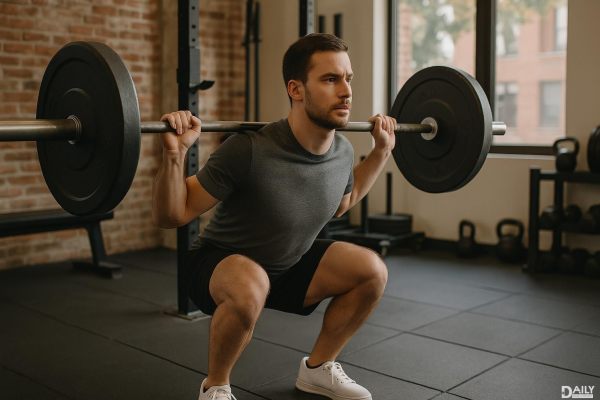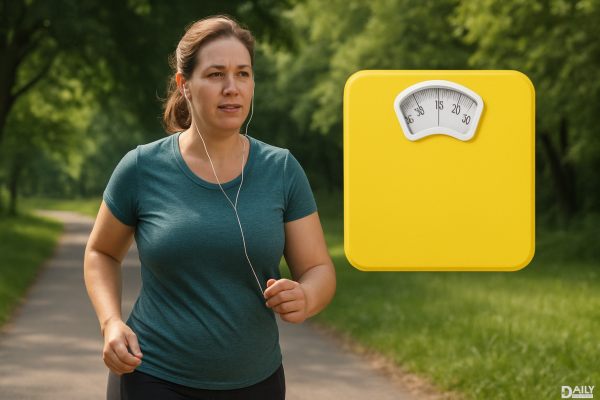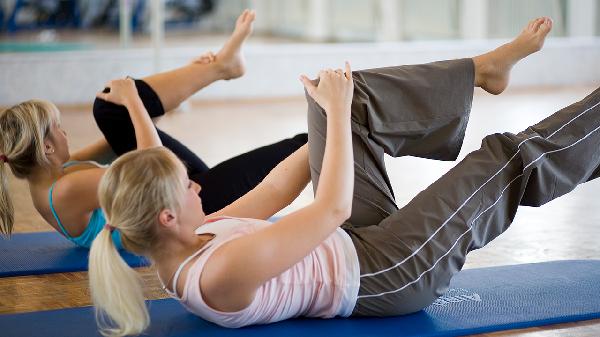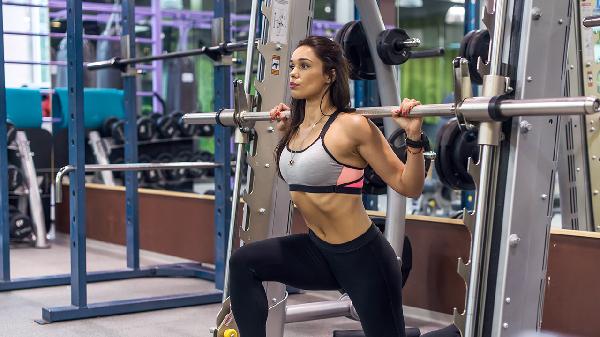Ever reached down to grab something off the floor, only to wince in pain or get stuck halfway down? If so, tight hamstrings are one of the possible culprits — and you might benefit from learning how to stretch your hamstrings.
There are several causes of tight hamstring, but the number one culprit is, you guessed it, sitting with your knees bent all day. Thankfully, performing hamstring stretch exercises can help relieve any tightness or stiffness, as well as elongate and stretch your hamstrings so that there's less tightness in the future. After all, underuse is another cause of tight, short muscles, so a few weekly stretch sessions are a great way to combat this.
Even the best hamstring stretches won't have the biggest impact unless you learn how to stretch your hamstrings properly. The best way to do that: hinge from the hips as you move through a stretch, rather than arching and rounding your lower back. Since your hamstring muscles are connected directly to your pelvis, this is important for making sure you're stretching the actual hamstring muscle, and protecting your lower back from injury.
What Causes Tight Hamstrings?
There are a variety of things that can make your hamstrings feel tight, says Chris Gagliardi, ACE-certified personal trainer. Injury and prolonged sitting are common culprits of tight hammies, as well as immobilization after injury, faulty motor control patterns, and potential genetic predisposition.
Grace Taylor, PT, DPT adds that weaknesses from other muscles like your quads and glutes can also cause tight hamstrings, since those weak muscles force your hamstrings to work harder. Conversely, underuse can lead to shortening of the muscle fibers, which in turn leads to overall muscle tightness.
Prolonged sitting stays on the naughty list, but that doesn't mean we can't undo its effects on our hamstrings.
Why Is Having Flexible Hamstrings Beneficial?
"Having tight hamstrings alters the way your body moves and functions," says Gagliardi. "The hamstrings need the ability to shorten and lengthen in order for your knees and hips to move properly."
Tight hamstrings reduce your ability to reach the ground, which can place more stress on your back if you're frequently bending over or lifting heavy objects, adds Taylor. As noted earlier, your hamstring muscles also attach directly to your pelvis, so if they're tight, they can negatively influence the position of your hips and spine. Both trainers agree that this can affect your posture, and Gagliardi adds that tight hamstrings can also impair your athletic performance, particularly speed, agility, and power.
Best Hamstring Stretches
Movement is crucial for opening tight hamstrings, says Gagliardi, and so is reducing the amount of time you spend sedentary. Muscles have a tendency to tighten from overuse or from underuse, adds Taylor, so it's beneficial to mobilize the tissues (with massage, a foam roller, massage gun) and static and dynamic stretches.
Gagliardi and Taylor provided recommendations for the best hamstring stretches, ahead. In terms of how stretch your hamstrings safely, make sure to only stretch to the point of slight discomfort. Never push past that point to where you're feeling pain.
Static stretching is most beneficial when held for 30 seconds, and it's better to stretch twice for 30 seconds instead once for 60 seconds, says Taylor. Both trainers recommend aiming for two to three stretch sessions per week. Keep reading to find the best hamstring stretches to incorporate into your workout routine.
Static Hamstring Stretches to Try
Static stretches are great for improving flexibility over time, especially when done consistently. Here are a few go-to moves that’ll help loosen up those tight hamstrings.
Standing Hamstring Stretch: Place one foot on a low surface (like a step or bench) and keep your leg straight. Hinge forward at the hips while keeping your back flat. You should feel the stretch along the back of your thigh. Hold for 30 seconds, then switch sides.
Seated Forward Fold: Sit on the floor with your legs extended straight in front of you. Hinge at the hips and reach for your toes (or as far as you comfortably can). Keep your back straight—don’t round it—to maximize the stretch in your hamstrings.
Lying Hamstring Stretch: Lie on your back and loop a towel or resistance band around one foot. Gently pull your leg toward you while keeping it straight. Hold for 30 seconds, then switch legs.
Dynamic Hamstring Stretches for Mobility
Dynamic stretches are perfect for warming up before a workout or just getting your blood flowing. These moves help improve range of motion while also engaging the muscles.
Leg Swings: Hold onto a wall or chair for balance. Swing one leg forward and backward in a controlled motion, keeping it straight. Do 10-15 reps per leg.
Walking Toe Touches: Take a step forward and reach down to touch your toes (or as close as you can get). Alternate legs as you walk forward. This helps loosen up the hamstrings while also engaging your core.
Good Mornings: Stand with feet hip-width apart and hands behind your head. Hinge at the hips while keeping your back flat, lowering your torso until you feel a stretch in your hamstrings. Return to standing and repeat for 10 reps.
Foam Rolling for Tight Hamstrings
Sometimes, stretching alone isn’t enough—you need to release tension in the muscle fibers. That’s where foam rolling comes in. It helps break up adhesions and improves blood flow to the area.
How to Foam Roll Your Hamstrings: Sit on the floor with the foam roller under your thighs. Use your hands to lift your hips slightly off the ground and roll from just above your knees up to your glutes. If you find a tight spot, pause and apply gentle pressure for 20-30 seconds.
Pro tip: If foam rolling is too intense, try a massage gun or even a tennis ball to target specific knots.
How Often Should You Stretch Your Hamstrings?
Consistency is key when it comes to improving flexibility. Gagliardi and Taylor recommend stretching your hamstrings at least 2-3 times per week for noticeable results. If you’re dealing with chronic tightness, daily stretching (even just for a few minutes) can help.
Remember, stretching shouldn’t be painful. If you’re feeling sharp pain, ease off and reassess your form. Over time, you’ll notice increased flexibility and less discomfort in everyday movements.
Final Thoughts on Hamstring Flexibility
Tight hamstrings can be a real pain—literally. But with the right stretches and a little patience, you can improve your flexibility and reduce discomfort. Whether you’re an athlete looking to boost performance or just someone who wants to bend over without wincing, incorporating these stretches into your routine can make a big difference.
So, next time you feel that familiar tightness creeping in, take a few minutes to stretch it out. Your hamstrings (and your back) will thank you.
























